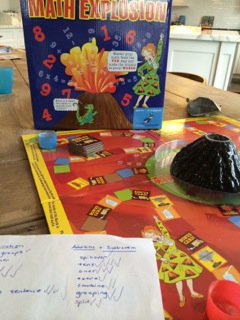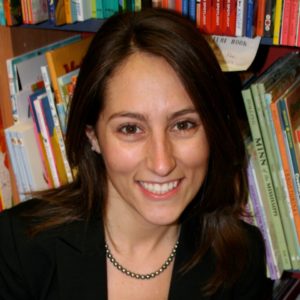 When was the last time you used a “Math” game to teach language? How about today?
When was the last time you used a “Math” game to teach language? How about today?
I had a great time with first graders who I am pre-teaching curriculum vocabulary due to word-finding difficulties. The classroom teacher has been very cooperative in giving me a list of vocabulary words by subject, including math. I wrote the words out by operation–addition, subtraction, multiplication and division–and as our friends explained their words, they proudly put a check next to the word they used as they solved the problem for their answer. This is a great group game as you can download math facts for different levels from their website so players of different abilities can compete. The prize for the winner at the end is to pour the little spoonfulls of baking soda he collects into the mouth of the volcano that is holding vinegar. Magic happens and eyes are wide open as the volcano “erupts” for the finale of the game. Here is my full review:
Kids had a blast with “Math Explosion” by The Young Scientists Club. First we created our customized math fact cards which can be accessed from the online fact creator so players of different abilities could compete on a level playing field, set up our dormant volcano with 2 ml of vinegar in the top and placed our colored measuring cups at the start position. Players have 2 versions to choose from–a speedy game board or extended version. Players take turns listening to their math fact and attempting to get a correct answer. If right, the player moves his measuring cup ahead a space. Every few spaces a favorite spot to stop is on the picture of spooning some baking soda into your measuring cup. One little friend almost passed up a bonus card (that often offers to skip ahead spaces) because he didn’t want to miss getting some baking soda and being the first to reach the volcano, add his powder and explode the volcano. Math and science are nicely seamed together in this game of computation. Since children are increasingly required to give the “How?” and “Why?” for their answers, we played the game with some verbal narration. I gathered the math vocabulary of first graders, listed the words and listened to my players verbalize as they got their answers, using the language of math. Spillover, tens, ones, combine and grouping became integrated in the problem solving for addition and subtraction, while equal groups, altogether, each, multiply and multiplication sentence were woven into multiplication answers. Kids always benefit from strong language skills within the STEM curriculum, and certainly gain when there is a fun venue like this game for learning. “Can we play one more time?” was called out after our first round which was a nice endorsement!



